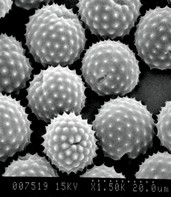|
Having trouble viewing this email? View it as a Web page.

|
|
|
Editor: Kelly Sprute February 24, 2021
Making a Difference
 USDA has a long history of investing in and supporting our nation’s Historically Black Colleges and Universities. Photo courtesy of Getty Images.
Celebrating the Agricultural Impacts of 1890 Land-Grant Universities
USDA has a long history of investing in and supporting our nation’s Historically Black Colleges and Universities (HBCUs). The 19 HBCUs established under the Second Morrill Act of 1890, along with the two HBCU land-grant universities established in the original 1862 legislation, University of the District of Columbia and University of the Virgin Islands, are a critical link in ensuring public access to agricultural education, research, and outreach programs are equitably distributed to all Americans. USDA’s National Institute of Food and Agriculture supports research at these institutions with both capacity and competitive funding. USDA celebrates the achievements and contributions of all the HBCU land-grant colleges and universities. The work they do is pivotal to American agriculture and helps build the next generation of agricultural scientists, agribusiness leaders, and farmers from underserved communities. For more information, read the USDA blog.
|
|

Each year, groundbreaking research discoveries from the 19 Historically Black Colleges and Universities that make up the 1890 Land-grant System have a critical impact on the advancement of science, American agriculture, and lives around the world.
Notable areas of research excellence and expertise among the 1890 land-grant institutions include small ruminant nutrition and production, aquaculture, and the tightly woven links between food, nutrition, and improved human health.
While we are celebrating Black History Month, now is the time for each American to recognize their individual role in a fair and equitable America. As NIFA Director, I promise to do all I can to ensure equity in our programs and diversity and inclusion among our workforce that support the national food and agriculture systems.
The challenges we face in agriculture, food production, environmental protection, economic development, and climate change have become more complex. Solutions that will work for everyone, require every voice to be heard and every culture to be considered.
It’s incumbent on us to guarantee that farmers, agribusinesses, and families across all communities in this country have access to the research and education they need to succeed. We must give everyone engaged in the agriculture enterprise the opportunity to be sustainable and profitable in their businesses and their lives, where we can.
Find out more about the research impact of 1890 Land-grant Universities in this week’s USDA Blog.
Dr. Carrie Castille
Director, National Institute of Food and Agriculture
|

Online Cover Crop Decision Tool
The Northeast Cover Crops Council (NECCC) recently released an online tool designed to support farm decision-making around cover crops. The Cover Crop Decision Support Tool is available at no cost. It includes a Cover Crop Explorer that provides in-depth information on more than 35 cover crop species. It also has a Species Selector that assists users in selecting individual cover crops based on plant hardiness zones, field soil and growing conditions, and cover cropping goals. NECCC was formed with support from a Northeast SARE Professional Development Program grant. Through this and other USDA funding. For more information, go online to view the tool.
|

Examples of Ag and Food Innovations in 1890 Land Grant Research
Innovations in the farm and food sectors have been a historic part of the 1890's land grant university research system, including continuing research and development at these facilities. USDA’s Rod Bain talks with National Institute of Food and Agriculture Director Carrie Castille and North Carolina A&T University’s Shengmin Sang about the 1890 LGU’s innovations to U.S. agriculture. For more information, listen to the USDA broadcast.
|

NIFA Career Opportunities
We are hiring! Remember to check out NIFA's Career Opportunities webpage, where there is a direct link to all open positions. You can also explore NIFA jobs at the USAjobs.gov website. Current openings in Kansas City, Missouri:
Administrative Operations Specialist, (GS 9-11)
Closing Date: 03/08/2021
|

Allergy Seasons are Getting Worse
If you live with seasonal allergies and feel like the pollen seasons feel longer and longer every year, you may be right. New research shows that pollen seasons start 20 days earlier, are 10 days longer, and feature 21 percent more pollen than in 1990. Allergies to airborne pollen can be more than just a seasonal nuisance. Allergies are tied to respiratory health, with implications for viral infections, emergency room visits, and even children’s school performance. More pollen, hanging around for a longer season, makes those impacts worse. Led by University of Utah School of Biological Sciences’ William Anderegg, researchers found that human-caused climate change played a significant role in pollen season lengthening and a partial role in pollen amount increasing. Their research, funded in part by USDA’s National Institute of Food and Agriculture, is published in Proceedings of the National Academy of Sciences. For more information, read the University of Utah article.
Scanning electron microscopy image of ragweed pollen, courtesy of Lewis Ziska.
|

Improving Rainbow Trout Filet Production via Genomic Selection
Global development and population growth has led to an increased demand for seafood around the world, but along with that demand comes a need for improved production. To meet this need in one of the most popular fish in the U.S., the University of Maryland (UMD) was recently awarded a grant from USDA’s National Institute of Food and Agriculture to explore genomic selection as a method of increasing fillet quality and yield in rainbow trout. Rainbow trout represents a $100 million industry in fish sales alone. This is separate from the significant recreational appeal of the fish, with trout fishing attracting about 8 million anglers throughout the year. With this grant, UMD and collaborators across academia and industry are taking the lead in showcasing the benefits of genomic selection in rainbow trout and beyond. For more information, read the UMD article.
A fly-fisher shows off a densely spotted rainbow trout. Photo courtesy of Getty Images.
|

|
|
|
NIFA’s mission is to invest in and advance agricultural research, education, and extension that solve societal challenges. NIFA’s investments in transformative science directly support the long-term prosperity and global preeminence of U.S. agriculture. Keep informed about NIFA, USDA, our land-grant and non-land-grant university partners, and stakeholders with the NIFA Update. Read past issues online, sign up for email updates or follow us on Twitter @USDA_NIFA, #NIFAImpacts or LinkedIn @usda-nifa.
If you wish to submit a news item or information, send an email to NIFAUpdate.
USDA is an equal opportunity lender, provider, and employer.
|
|
|
|